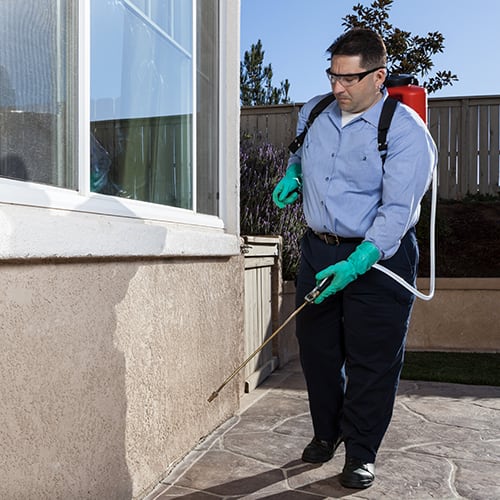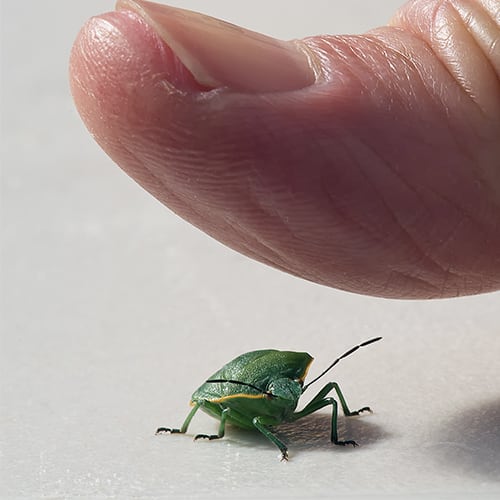3. Chemical Perimeter Spray
If you’re already dealing with a stink bug infestation surrounding your home, you’ll want to take immediate measures towards keeping the bugs out of your house. It’s one thing to have the bugs outside where their odors won’t be as strong, but if they’re trapped inside your house with you, the smell could definitely start to impact your well-being.
A perimeter spray is done with either liquid or powder pesticides and is often executed by pest control professionals. But these pesticides are readily available on the market, and you can easily perform the treatment on your own and save some money.
Using an insecticide sprayer, you should treat the perimeter of your home every 30 days throughout the seasons that stink bugs thrive in – summer and fall. Pay special attention to windows and doors, areas where cables and pipes enter your home, around eaves and soffits, and around any crack or crevice that you may notice in your foundation or roof. Stink bugs entry points will be very small and hard to see, so you’ll need to pay very close attention or even employ professional pest control.
Find out which stink bug pesticide sprays fit your budget and needs. When using any pesticides, be sure to keep children and pets away until the poison has dried.







